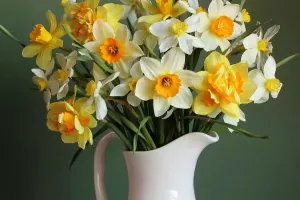Tulips, those beautiful and mysterious flowers, are widely adored for their elegant shapes and brilliant colors.
However, their story extends beyond mere admiration in the gardening world.
The history of tulips is profound and complex, intricately linked to human economy, culture, and art. By delving into the history of tulips, we uncover that this small flower carries rich cultural connotations and historical significance.
The narrative behind tulips is far more intricate and captivating than it initially appears.
Originally, tulips were not native to Europe, despite our common association of them with the Netherlands today. Their origins can be traced back to the mountainous regions of Central Asia, particularly present-day Kazakhstan and Uzbekistan.
These wild tulips flourished in dry alpine grasslands, becoming a wonder to the herders in the area. Over time, tulip seeds and bulbs traveled to distant lands and were eventually introduced to the Ottoman Empire via the Silk Road.
In Ottoman culture, tulips took on symbolic meanings, representing power, wealth, and nobility, ultimately becoming a symbol of imperial glory.
The tulip’s most significant historical moment occurred in the Netherlands during the 17th century. The connection between tulips and the Netherlands began with a botanist named Carolus Crusius, who brought tulips to Europe.
Through his research at Leiden University, he helped the flower gain recognition in academic and horticultural circles. It was during this period that tulip prices began to soar in the market, leading to one of history’s most infamous economic bubbles known as “Tulip Mania.”
Tulip Mania unfolded in the Netherlands during the 1630s, a time marked by economic and cultural prosperity. As trade flourished, the Dutch accumulated wealth, fostering a strong interest in luxury goods. Tulips quickly became symbols of wealth and status due to their rarity, unique shapes, and vibrant colors.
Within a few years, tulip bulbs became highly sought after by investors. Certain rare tulip varieties saw prices reach staggering heights, with reports claiming that a rare bulb could be exchanged for a mansion or even an estate.
Even more astonishing was that many participants in this frenzy had never actually seen these rare flowers; they traded the bulbs on paper, banking on rising prices.
However, the economic bubble eventually burst. In 1637, the tulip market collapsed suddenly, with prices plummeting overnight and many investors facing bankruptcy.
This event became the first recorded example of an economic bubble burst in history, transforming tulips from mere flowers into symbols within financial history, representing irrational human behavior amid speculation and desire.
The tale of tulip mania remains a classic case study in the phenomenon of economic bubbles, serving as a cautionary reminder about the risks associated with speculative behavior.
Following tulip mania, the market cooled, but tulips did not vanish. Instead, they continued to play a significant role in European horticulture, particularly in the Netherlands, where they became a symbol of national identity. By the 19th century, the Netherlands emerged as the world’s largest tulip producer, a status that remains unchallenged today.
Each spring, the tulip fields of the Netherlands attract tourists from around the globe, with their vibrant colors transforming vast landscapes into a breathtaking tapestry. The cultivation and export of tulips are integral to the Dutch economy, earning the country its reputation as the “Land of Tulips.”
Tulips have not only impacted history and the economy but have also profoundly influenced art and culture. From 17th-century paintings to contemporary photography, tulips have remained a favored subject for artists.
Especially during the Dutch Golden Age, many renowned painters created works centered on tulips, closely linking the flower with the prosperity and luxury of Dutch society at that time. Beyond paintings, tulips have appeared in poetry, literature, and even music, becoming significant symbols in human artistic expression.
Though tulips have evolved from wild plants to luxury items and finally to popular horticultural flowers, their story remains rich with legends. More than just a flower, the tulip represents the intersection of history, economy, culture, and art.
Its journey has traversed from the mountains of Central Asia to the palaces of the Ottoman Empire, to the fields of the Netherlands, ultimately becoming a celebrated figure in global gardening. In today’s world, tulips continue to embody beauty and elegance while symbolizing humanity’s relentless pursuit of natural beauty.


